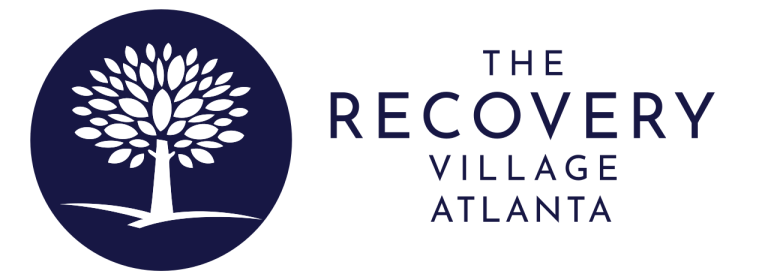Key Takeaways
- The opioid crisis has led to increased demand for inpatient rehabilitation centers offering comprehensive care and Medications for Opioid Use Disorder (MOUD).
- In 2023, the US saw a slight decline in drug overdose deaths, but the emergence of new synthetic opioids continues to challenge public health efforts.
- Opioid addiction has widespread societal impacts, including reduced life expectancy, economic burdens, and strained healthcare systems.
- Inpatient opioid rehab centers provide medically supervised detox, therapy, and aftercare, with treatment duration varying based on individual needs.
- Rehabilitation involves multiple stages: detoxification, therapy and counseling, medication-assisted treatment (MAT), and aftercare planning.
- Benefits of inpatient rehab include 24/7 medical supervision, structured environments, personalized treatment plans, and supportive communities.
- Key factors in selecting a rehab center include accreditation, treatment modalities, location, program duration, and aftercare services.
- Resources like SAMHSA’s search tool, state-funded programs, and hotlines can assist in finding local inpatient opioid rehab centers.
- Success narratives from inpatient rehab centers highlight the effectiveness of comprehensive treatment programs and the importance of support systems in recovery.
The Demand for Inpatient Opioid Rehabilitation Facilities
The opioid crisis has escalated the demand for inpatient rehabilitation centers, as they play a critical role in addressing the complex needs of those struggling with opioid addiction. Opioid Treatment Programs (OTPs), which are certified by the Substance Abuse and Mental Health Services Administration (SAMHSA) and accredited by SAMHSA-approved bodies, offer Medications for Opioid Use Disorder (MOUD) as part of their treatment services. Centers for Medicare and Medicaid Services (CMS) regulations underscore the importance of these specialized programs, which provide comprehensive care, including 24-hour supervision and a range of amenities to support recovery.
Statistics on Opioid Use Disorder (OUD)
Statistics reveal a harrowing reality:
- in 2017, an estimated 201 million people battled opioid use disorder (OUD), with 1.7 million suffering from prescription painkiller addiction and nearly 700,000 addicted to heroin.
- The surge in OUD cases necessitates an increase in inpatient facilities that can provide the intensive care required for recovery. These centers are often costlier than outpatient options due to the extensive involvement of medical staff, limited bed availability, and the continuous care they offer.
- Rehabs.com highlights the variability in program costs and the importance of considering factors such as location, insurance coverage, staff qualifications, accreditation, and treatment philosophy when seeking an inpatient rehab center.
Given the complexity of opioid addiction, inpatient rehab centers are essential for providing structured, supportive environments where individuals can detoxify safely and learn to manage their addiction. The necessity for more such facilities is evident, as they are instrumental in curbing the opioid epidemic and facilitating long-term recovery.
Current Opioid Addiction Statistics and Trends
Recent data on opioid addiction underscores the complexity of the epidemic. In 2023, the United States saw a slight decline in drug overdose deaths, with an estimated 107,543 fatalities, marking a 3% decrease from the previous year. This reduction represents the first annual decrease in drug overdose deaths since 2018, according to the CDC’s National Center for Health Statistics. Despite this, the emergence of new synthetic opioids and increased drug supply and demand continue to exacerbate the world drug problem, as reported by the UN Office on Drugs and Crime.

It's time to get your life back.
Whether you are struggling with addiction, mental health or both, our expert team is here to guide you every step of the way. Don’t wait— reach out today to take the first step toward taking control of your life.
Key Statistics:
- While opioid prescribing has declined nearly 50% since 2012, the American Medical Association highlights the growing issue of overdoses and deaths related to illicitly manufactured fentanyl and other substances.
- The 2023 Overdose Epidemic Report emphasizes the shift in the crisis from prescription opioids to illicit drugs.
- Opioid overdoses have significantly impacted U.S. life expectancy, with a study using CDC data revealing a nearly one-year decline due to opioid-related deaths.
These statistics underscore the complexity of the opioid epidemic and highlight the importance of continued efforts in prevention, treatment, and recovery support to mitigate this public health crisis.
The Devastating Impact of Opioid Addiction on Individuals and Society
The opioid crisis has far-reaching consequences that extend beyond individual health, affecting families, communities, and the broader society. According to the UNODC World Drug Report 2024, the rise in opioid addiction has led to an increase in drug use disorders and associated environmental harms. The report highlights the emergence of new synthetic opioids and the record supply and demand of other drugs as exacerbating factors.
Consequences of Opioid Addiction:
- Research from Johns Hopkins University reveals that opioid-related deaths have significantly reduced U.S. life expectancy, with a particularly severe impact on young minorities.
- The crisis has not only led to a loss of life but has also strained healthcare systems, contributed to a rise in orphaned children, and has had a ripple effect on the economy due to lost productivity and increased healthcare costs.
- The crisis has highlighted the need for an integrated public health approach, as discussed in research published by the National Institutes of Health.
A Multi-Faceted Response to the Complexity of Opioid Addiction
The complexity of opioid addiction requires a multi-faceted response that includes prevention, treatment, and support for recovery, while also addressing the social determinants that influence drug use and addiction. Ultimately, the opioid crisis is not just a health issue but a social one that demands a coordinated and comprehensive response from all sectors of society.
Inpatient Opioid Rehab Services and Duration
Inpatient opioid rehabilitation is a critical service for individuals struggling with opioid addiction, offering a structured and supportive environment for recovery. These centers provide comprehensive care, including medically supervised detoxification, individual and group therapy, medication-assisted treatment (MAT), and aftercare planning. The typical duration of stay in inpatient rehab varies depending on individual needs but generally ranges from 28 days to several months.
Recent Updates
- Recent updates from the Substance Abuse and Mental Health Services Administration (SAMHSA) and the Centers for Medicare & Medicaid Services (CMS) reflect advancements in opioid addiction treatment. SAMHSA’s final rule has made certain COVID-19-related flexibilities permanent, such as take-home doses of methadone, enhancing the continuity of care post-discharge.
- CMS’s updates to the Inpatient Rehabilitation Facility Prospective Payment System (IRF PPS) for fiscal year 2024 have made it easier for hospitals to open new IRF units, allowing for increased access to inpatient services. Learn more about the CMS updates.
- Studies have shown that longer durations of MAT with medications like buprenorphine or methadone correlate with lower rates of overdose and serious opioid-related acute care use. This emphasizes the importance of sustained treatment and the potential benefits of inpatient rehab programs that can provide extended care. Read the comparative study on treatment effectiveness.
Overall, inpatient opioid rehab centers play a vital role in addressing the opioid crisis by offering an environment conducive to recovery and adaptation of treatment practices to meet the evolving needs of patients.
Stages of Inpatient Opioid Rehabilitation
Inpatient opioid rehabilitation is a structured, intensive treatment program designed to help individuals overcome opioid addiction. The process typically involves multiple stages, each critical to the journey towards recovery.
Stage 1: Detoxification
The first stage is detoxification, where patients undergo medical supervision to safely manage withdrawal symptoms, which can begin within hours of the last opioid use and vary in intensity. Research indicates that this early stage is crucial as it addresses the physical dependence on opioids.
Stage 2: Therapy and Counseling
Following detox, the next phase is therapy and counseling. This stage focuses on the psychological aspects of addiction, utilizing individual and group sessions to address underlying issues and equip patients with coping strategies.
Stage 3: Medication-Assisted Treatment (MAT)
The third stage is medication-assisted treatment (MAT), where medications like buprenorphine or methadone are used to reduce cravings and withdrawal symptoms, as supported by studies showing its efficacy in reducing overdose and opioid-related acute care use.
Stage 4: Aftercare Planning
The final stage is aftercare planning, which prepares individuals for life post-rehab. This includes developing a relapse prevention plan, connecting with support groups, and arranging for ongoing therapy.
Throughout the inpatient rehab process, patients benefit from a structured environment and constant medical supervision, which are key advantages of inpatient settings.
Advantages of Inpatient Opioid Rehabilitation
Inpatient opioid rehabilitation centers offer numerous benefits for individuals seeking recovery from opioid addiction. Key advantages include:
- 24/7 medical and clinical supervision, ensuring that patients have access to care at all times during their stay. This constant support is crucial during the detoxification process, which can be intense and uncomfortable, as well as throughout the treatment period.
- A structured environment that is conducive to recovery. This structure includes a daily routine, therapy sessions, and recreational activities, all designed to help patients develop new, healthy habits and coping strategies. The controlled setting also removes access to opioids, reducing the risk of relapse during treatment.
- Personalized treatment plans are another key benefit of inpatient rehab. Programs are tailored to meet the specific needs of each individual, addressing not only their addiction but also any underlying issues such as mental health conditions. This comprehensive approach can lead to a higher success rate in achieving long-term sobriety.
- Lastly, inpatient rehab centers often foster a supportive community of peers who are going through similar challenges. This sense of community can provide encouragement and understanding, which are vital components of the recovery process.
How to Locate Nearby Inpatient Opioid Rehab Centers
Finding a local inpatient opioid rehab center is a critical step in the journey to recovery.
Steps to Find a Rehab Center:
- Use Accredited Resources: Explore accredited addiction rehab centers using online directories that provide details on services such as detoxification, inpatient, and outpatient care.
- Consider State-Funded Options: State-funded rehabilitation centers can be a viable option for those seeking cost-effective treatment.
- Evaluate Key Factors: Consider factors such as accreditation, staff qualifications, treatment methods, and the facility’s overall philosophy toward recovery.
For immediate assistance, local hotlines or community resources can provide personalized recommendations and help navigate the available options.
Key Considerations for Selecting an Opioid Rehab Center
Choosing the right opioid rehab center is a critical decision that can significantly influence recovery outcomes. The following factors are essential when evaluating potential facilities:
- Accreditation and Licensing: Ensure the rehab center is accredited by reputable organizations and holds the necessary state licenses.
- Treatment Modalities: Look for a center that offers evidence-based treatment approaches tailored to opioid addiction.
- Location: Consider whether a local facility or one further away is best suited to your needs for support and successful recovery.
- Duration of Program: Rehab programs can vary in length, typically ranging from 30 to 90 days. Select one that provides adequate time for your treatment.
- Aftercare and Support: Post-treatment support is crucial. Inquire about the availability of aftercare programs and alumni networks.
- Staff Qualifications: Check the credentials and experience of the medical professionals and support staff.
- Cost and Insurance: Understand the costs involved and whether the center accepts your insurance or offers financial assistance.
- Facility Amenities: Consider the living conditions, amenities, and environment, as comfort can aid in the recovery process.
- Success Rates: Research the center’s success rates and patient testimonials to gauge effectiveness.
- Specialized Programs: Some centers offer programs for specific populations or co-occurring disorders, which may be pertinent to your situation.
It’s important to visit the facility or speak with representatives to get a feel for the environment and ensure it aligns with your recovery goals. A well-chosen rehab center can provide the foundation for a successful journey to sobriety.
How to Find Local Inpatient Opioid Rehab Centers
Finding the right inpatient opioid rehab center is crucial for effective treatment and recovery. There are several resources available to help individuals locate a rehab center that fits their needs:
- One of the primary resources is the Substance Abuse and Mental Health Services Administration (SAMHSA), which offers a confidential and anonymous search tool to find treatment facilities based on an individual’s address. This resource is invaluable for finding centers across the United States and its territories.
- Government programs can also provide assistance. For example, state-funded treatment options may be available to those who meet certain criteria, such as prioritization due to severity of addiction or financial need.
- Some religious organizations offer residential rehabilitation and support programs that cater to specific faith traditions, providing an alternative for those seeking a faith-based recovery environment.
- For veterans, the Department of Veterans Affairs (VA) provides specialized substance use treatment, which can be accessed by contacting the local VA medical center.
- It is also beneficial to explore local health care partnerships, like those provided by The Recovery Village, which collaborate with community health organizations to extend treatment services.
- For immediate assistance, hotlines and helplines are available, including the newly established 988 number, which connects individuals to mental health and substance use disorder resources.
It’s important to conduct due diligence when selecting a rehab center, considering factors such as accreditation, continuum of care, and the ability to treat co-occurring mental health disorders.
Triumph Over Addiction: Inpatient Opioid Rehab Success Narratives
Inpatient opioid rehabilitation centers play a crucial role in the journey to recovery for many individuals struggling with opioid addiction. Success stories from these centers are not just inspiring, they are a testament to the effectiveness of comprehensive treatment programs. Personal accounts of recovery illuminate the transformative impact of inpatient care. For instance, individuals who have overcome severe opioid addictions often highlight the importance of a supportive community and the availability of medical and therapeutic resources during their stay.
These narratives of recovery not only provide hope to those still struggling with addiction but also underscore the critical role of inpatient rehab centers in providing a structured, supportive environment for healing and recovery.
The Impact of Support Systems in Opioid Recovery
The journey to recovery from opioid addiction is complex and multifaceted, with the role of support systems being a critical component for success. The presence of a robust support network can provide individuals with the encouragement, accountability, and resources necessary to navigate the challenges of recovery. Research has demonstrated that social support can discourage substance use and promote healthier behaviors, underscoring its significance in the recovery process.
- Family members, in particular, are instrumental in offering hope and reducing the risk of relapse. They can help create a nurturing environment that fosters healing and growth.
- Community support, including peer groups and sober communities, plays a vital role. These groups offer a platform for shared experiences, guidance, and the reinforcement of sober habits.
- The spiritual and religious aspects of support systems can also provide a sense of purpose and reliance on a higher power, which can be a source of strength for many.
Other Benefits of Support Systems
Moreover, having a support system can alleviate stress, combat social isolation, and mitigate the risks associated with loneliness, including mental health issues like anxiety and depression. It is crucial for individuals in recovery to have trusted people they can turn to, whether they are family, friends, teachers, faith leaders, or peers. The process of creating and maintaining healthy boundaries, as well as motivating loved ones towards positive change, is an integral part of fostering a conducive environment for recovery.
Addiction and Mental Health Treatment at The Recovery Village Atlanta
If you or someone you love is struggling with addiction and co-occurring mental health issues, help is available. At The Recovery Village Atlanta, our addiction experts can help you leave your addiction behind and begin a healthier, substance-free life in recovery. Contact us today to speak with a representative and learn more about addiction and mental health treatment programs that can work well for you.









